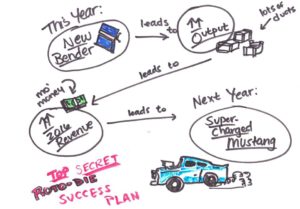Understanding the issue
Why are you thinking about getting a new machine in the first place? Do you need to improve ergonomics? Do you need to reduce labor if you were to add a machine? Will this help input and/or output? Identifying the issue and understanding whether or not a machine can help these issues is a good start. Make sure to talk with people in the office and on the line for input and feedback.
Assign a project manager
Handing off the accountability to someone this early in the process makes for a more seamless process, and shows everyone there is a point person if labor is needed for your new machine. They’ll also be the main point of contact for the company that builds your machine, both during and after the process.
Deciding what to buy
Cost is probably going to be your biggest hurdle, so determining whether getting a new or used machine is important to establish early. Does it require labor or focuses on one specific thing? Then probably look at a used machine first. Do you need automation or a machine that solves a lot of small problems that your shop has? Start with the new.
Making sense of your purchase
Is the machine you’ve found a good fit, both literally and figuratively? Do you have the space for it in your shop, and does it add to the value of the machines you do have? If labor is required, are there operators ready that can learn the machine fast? If it’s automated, do you need to get rid of a different machine? Can you take advantage of Section 179 tax deductions by the end of the year? With Section 179, make sure to check if you are able to deduct some of or the full price of the machine, new or used. The spend caps and stipulations change every year, so even if your business has taken advantage of Section 179 in the past, make sure you know the qualifications before committing to your purchase.
Aftermarket
So you’ve got your new machine! But the process isn’t quite over. Make sure your assigned project manager is still in scheduled contact with the machine builder for the next few months for check-ins and any questions that may arise. Verifying production capabilities is crucial – if it doesn’t work, then what is the point?

The most important part of this machine buying process is clarity – by being in consistent communication with the people that you are buying from, your shop’s representative, and the operators who are working on it (or the software, if you’re going the automated route) makes for the most seamless transition when buying a new machine.

